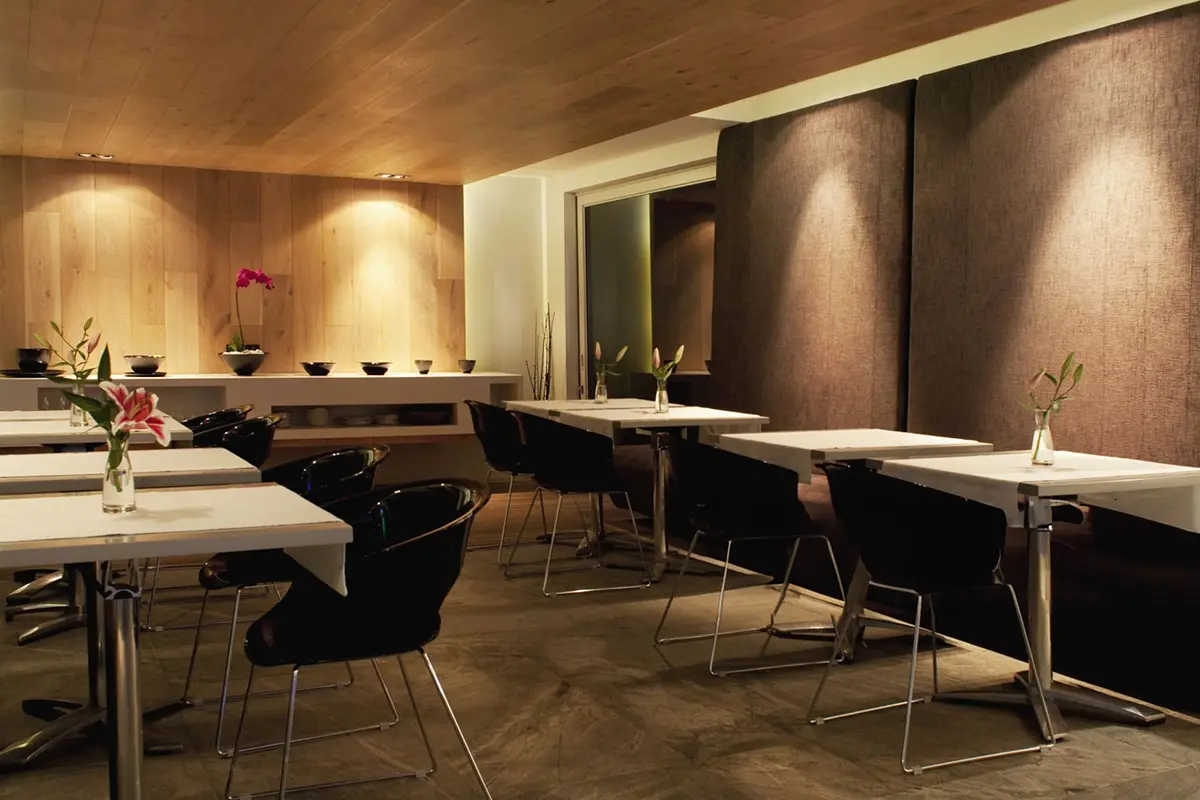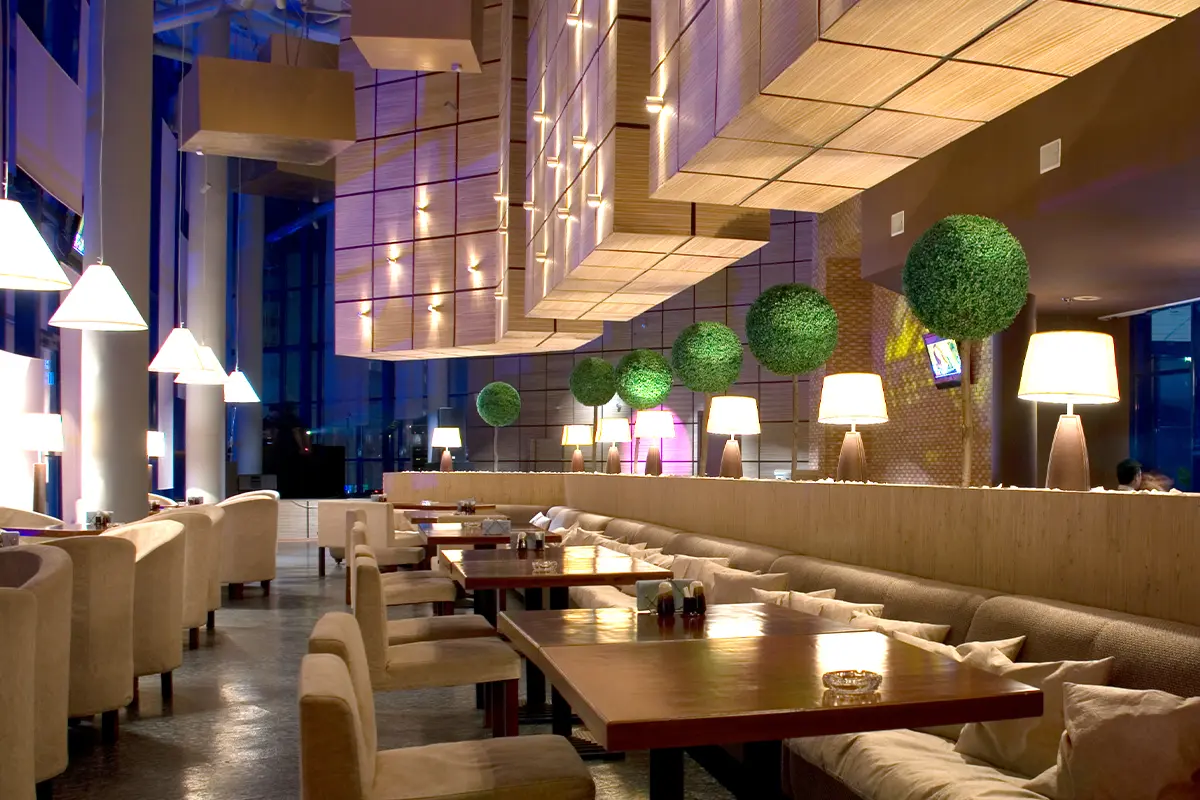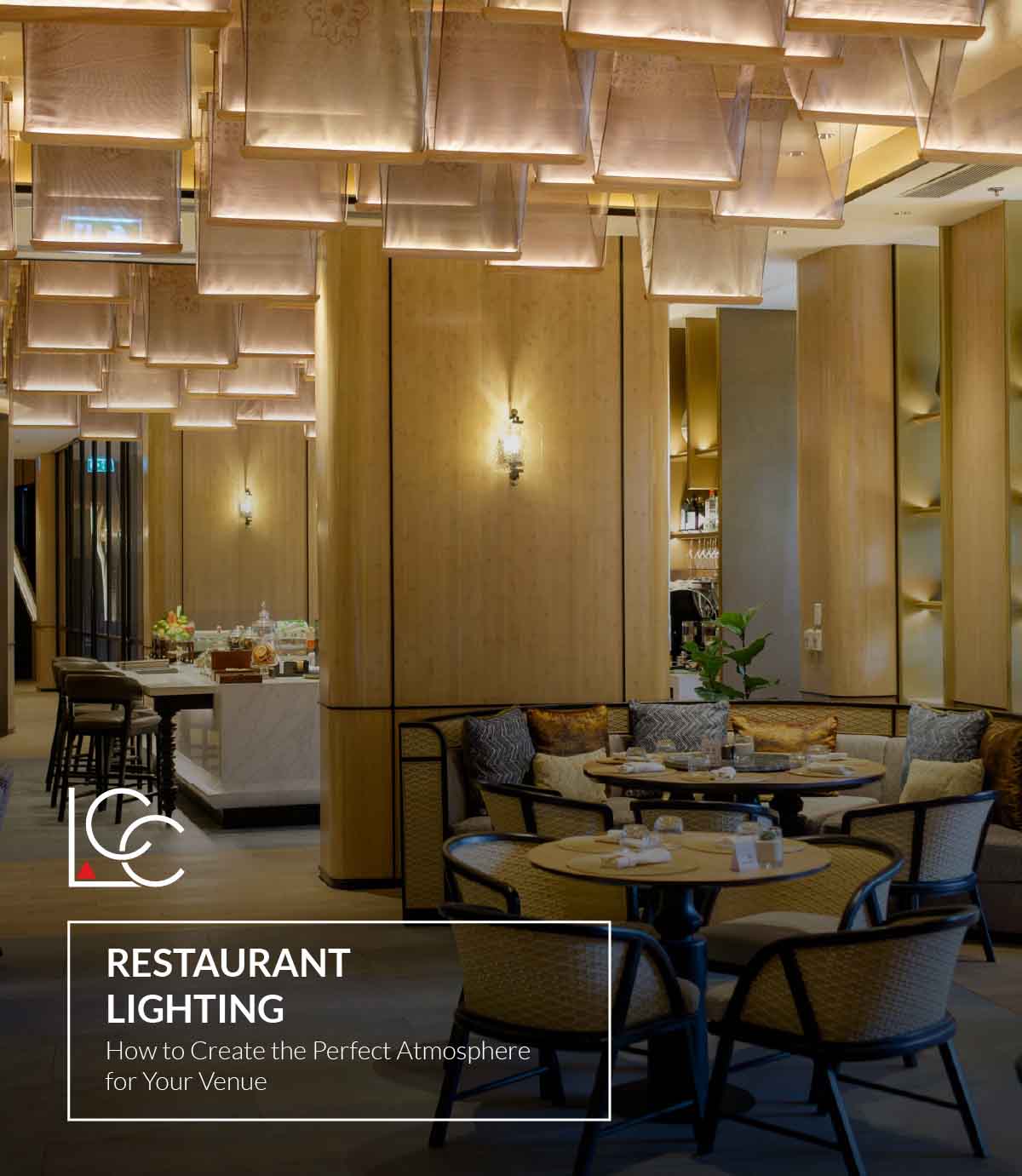Lighting plays a fundamental role in creating a welcoming atmosphere in restaurants. It’s not just a functional element, but a central aspect of design that can greatly influence your customers’ experience, highlighting both the architecture of the space and the food itself.
Today, every detail matters, and carefully planning your restaurant’s lighting enhances the overall experience you offer, encouraging guests to return and become regular customers. In this article, we’ll explore the basic principles of restaurant lighting, the different types of lighting you can use, and how to create an atmosphere that aligns with the style and target audience of your venue.

Restaurant Lighting: Why Is It Important?
Lighting plays a fundamental role in many commercial spaces and is used to offer customers a high-level experience. In restaurants, too, lighting becomes a central element.
Customers are no longer simply looking for a meal — they’re increasingly in search of a true experience that can stimulate the senses and create intimacy. For this reason, lighting design is now an essential aspect of planning any restaurant.
First and foremost, restaurant lighting acts as a business card — it’s the first impression that welcomes guests as they enter. The lighting at the entrance makes your venue recognizable and invites people in to dine.
Lighting can also influence how food is perceived, making it the focal point of the table and even affecting how colors appear.
Of course, lighting is key in defining the restaurant’s interior design. It can transform a cold, impersonal space into one that feels warm, welcoming, and refined. You can use lighting to highlight design features, furniture, objects, or artwork, giving your restaurant a unique personality.
Lighting can also be used to guide guests through the space — for example, by leading them toward the bar or restrooms.
Lastly, well-designed lighting helps reinforce your brand identity and the character of your restaurant. Whether your space has a rustic or modern vibe, choosing the right lighting style enhances the aesthetic impact and communicates your values more effectively.

Restaurant Lighting: Which Types to Use
To properly light your restaurant, it’s important to combine different types of lighting, each serving a specific purpose. Here are the main types of lighting to consider when designing your project.
- General (or Ambient) Lighting: This is the light that allows people to see and move around inside the restaurant. It usually comes from ceiling fixtures such as recessed spotlights, pendant lamps, or integrated LED systems, depending on the style you want to achieve. The light should be even and glare-free, calibrated according to the size of the space.
- Accent Lighting: Used to highlight specific elements of the restaurant, such as a decorated wall, artwork, design features, or a display of premium bottles. This can be achieved with adjustable spotlights or LED strips.
- Table Lighting:It’s important to create an intimate and cozy atmosphere. Small lamps or pendant lights above the tables are used to allow guests to enjoy their meal without being disturbed by overly bright lights.
- Functional Lighting: Functional lighting is used to illuminate the kitchen, corridors, bathrooms, and other operational areas. Here, practicality is key, but it’s still important to maintain consistency with the restaurant’s overall style.
Restaurant Lighting: How to Design It
Now let’s look at how to best light your restaurant based on the points discussed so far.
One often overlooked element is the outdoor lighting of the restaurant. As mentioned before, outdoor lighting is the true “business card” of your venue and makes it recognizable to passersby. Make sure to properly illuminate the entrance by choosing fixtures that match your style.
Clearly, the quality of the food and the aesthetics of the space are central in defining the style of a restaurant, but these can be enhanced by well-designed lighting. Various studies have shown that lighting can make customers feel comfortable, improving their overall experience and encouraging them to return.
For this reason, it’s crucial to carefully study the type and intensity of the light used both over the tables and throughout the rest of the space.
If you want to develop a high-quality lighting design, it’s important to start planning the lighting early on—checking the placement of power outlets and tables.
It’s also essential to give your restaurant a well-defined style to make it recognizable and gain a competitive edge. There are several elements to consider to achieve this.
The interior design plays a crucial role and directly depends on your target clientele. The available space must also be carefully considered. If you have a small venue, you might focus on lighting individual tables, while a larger space will require lighting different zones separately with suitable fixtures.
The color and intensity of the lights also vary based on the concept of the restaurant. Typically, restaurants use soft lighting that creates a cozy atmosphere with the right level of brightness.

Restaurant Lighting: Mistakes to Avoid
Here are some mistakes you should avoid when designing the lighting for your restaurant:
- Using lighting that is too intense or glaring, which can ruin the atmosphere and make customers uncomfortable.
- Inconsistent lighting that doesn’t match the style of the venue—for example, a rustic tavern lit with cold white neon lights can spoil the ambiance.
- Neglecting natural light: it’s important to make use of windows and natural light sources to create a pleasant environment and reduce energy consumption.
- Failing to differentiate between various areas: each zone—such as the bar, dining room, restrooms, and kitchen—has different needs and requires specific lighting.
- Not using dimmers: dimmers and intensity controls allow you to adjust the lighting for special events or different times of the day.

Restaurant Lighting: Conclusion
Lighting in a restaurant is a strategic element that must be carefully designed. Properly planned lighting can create a warm atmosphere, enhance the perception of the space in the eyes of customers, and encourage them to return.
Every restaurant has its own identity, and lighting—together with design and service—must be able to express it in the best possible way. There is no perfect formula, but the key is to find the right balance between function, atmosphere, and style.
If you are opening a restaurant or want to renovate it, trust LuceControCorrente. Our technicians will develop tailored solutions for your space, making your restaurant truly unique.
